Sonic alterations of constructed space Various institutions and public domains
(2011-2015)
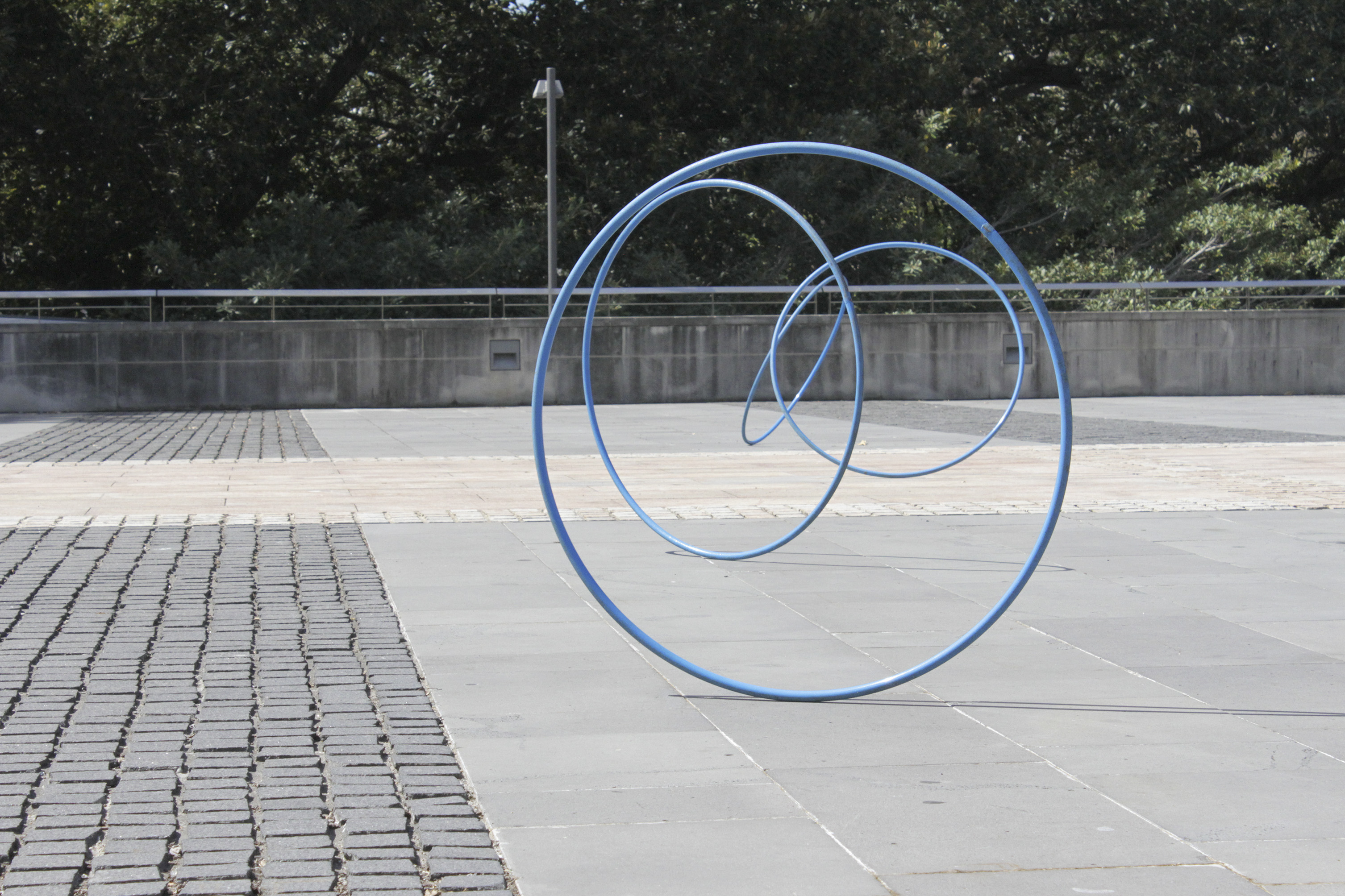
MULTIPLE PERFORMANCE DATES & VENUES
Rooftop car park, Russel Street Melbourne, November 2011
Federation Square, during the Melbourne Prize for Urban Sculpture, November 2011
Roof top carpark, During Glasgow International Festival of the Visual Arts, April 2012
Lithuanian Club, North Melbourne, during Action/Response, March 2013
Saint Mary’s Cathedral Forecourt, during 19th Biennale of Sydney, April 2014
Cockatoo Island, during 19th Biennale of Sydney, April 2014
COLES carpark, during the Cinema’s project, July 2014
Institute of Modern Art, Brisbane, during Liquid Architecture, October 2014
Maungawhau Mt Eden, Tamaki Makarau Auckland, July 2015
RELATED EXHIBITION
A three channel video of this work was presented during Melbourne Now, National Gallery of Victoria, titled titled Hoops: sound tests, performances, documents (2011 – 2013), 2013.
This work was acquired by Monash University Museum of Art Collection.
ASSOCIATED MATERIAL
Essay by Bree Richards, MUMA
This work is part of an ongoing experiment involving informal performances with steel rings that measure 1m in diameter and which weigh 10kg each. The rings are spun upon the ground of multiple public sites over time, as a way to generate a set of overlapping rhythms and discontinuities. A sonic field involving multiple cross-rhythms emerges in each specific event of encounter between the steel of the rings and the materiality of the ground(s) upon which they are spun. The sonic field that is generated temporarily seizes the space in which it occurs, repositioning these sites from their familiar function to becoming sound-generating surfaces.
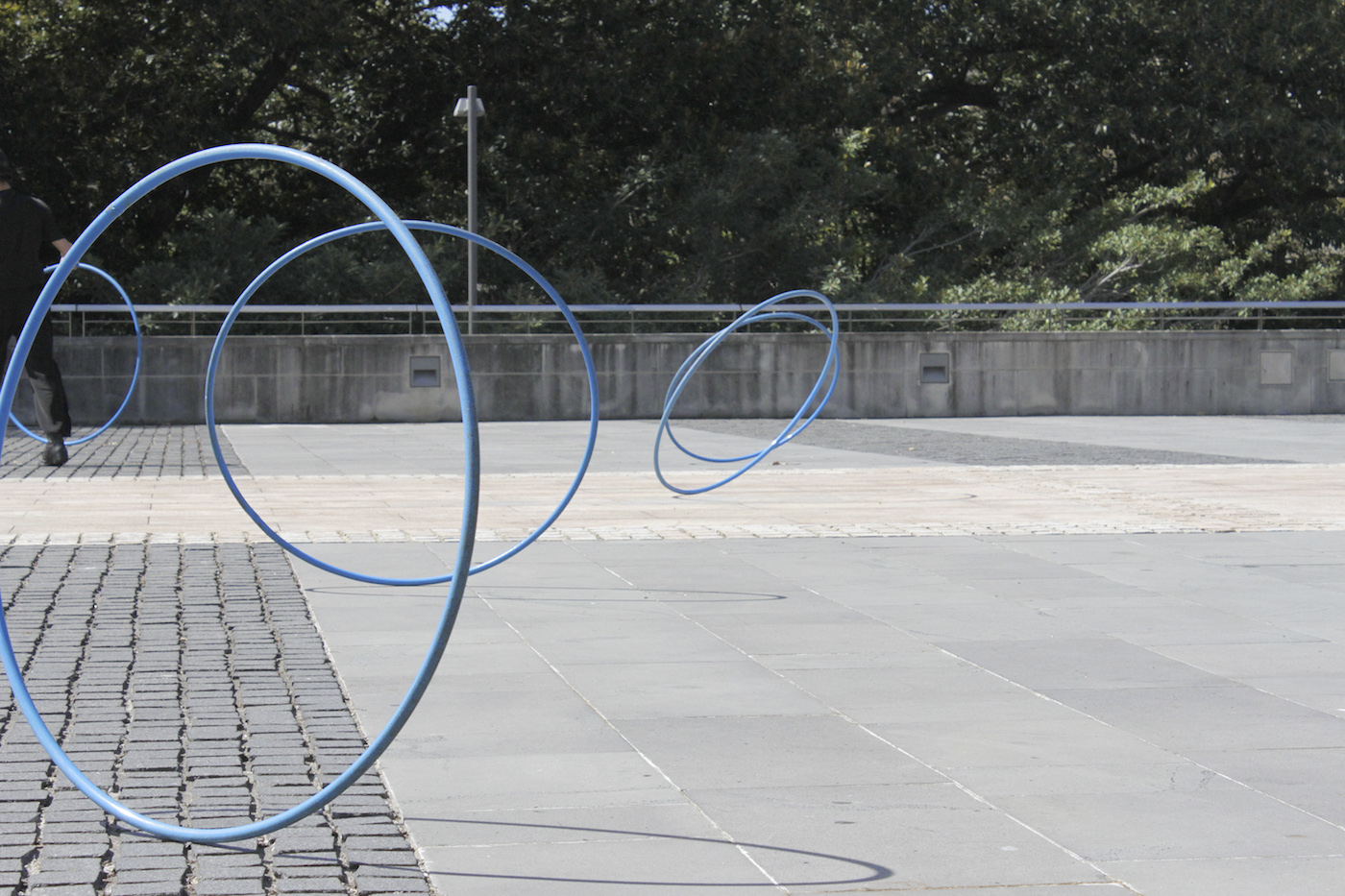
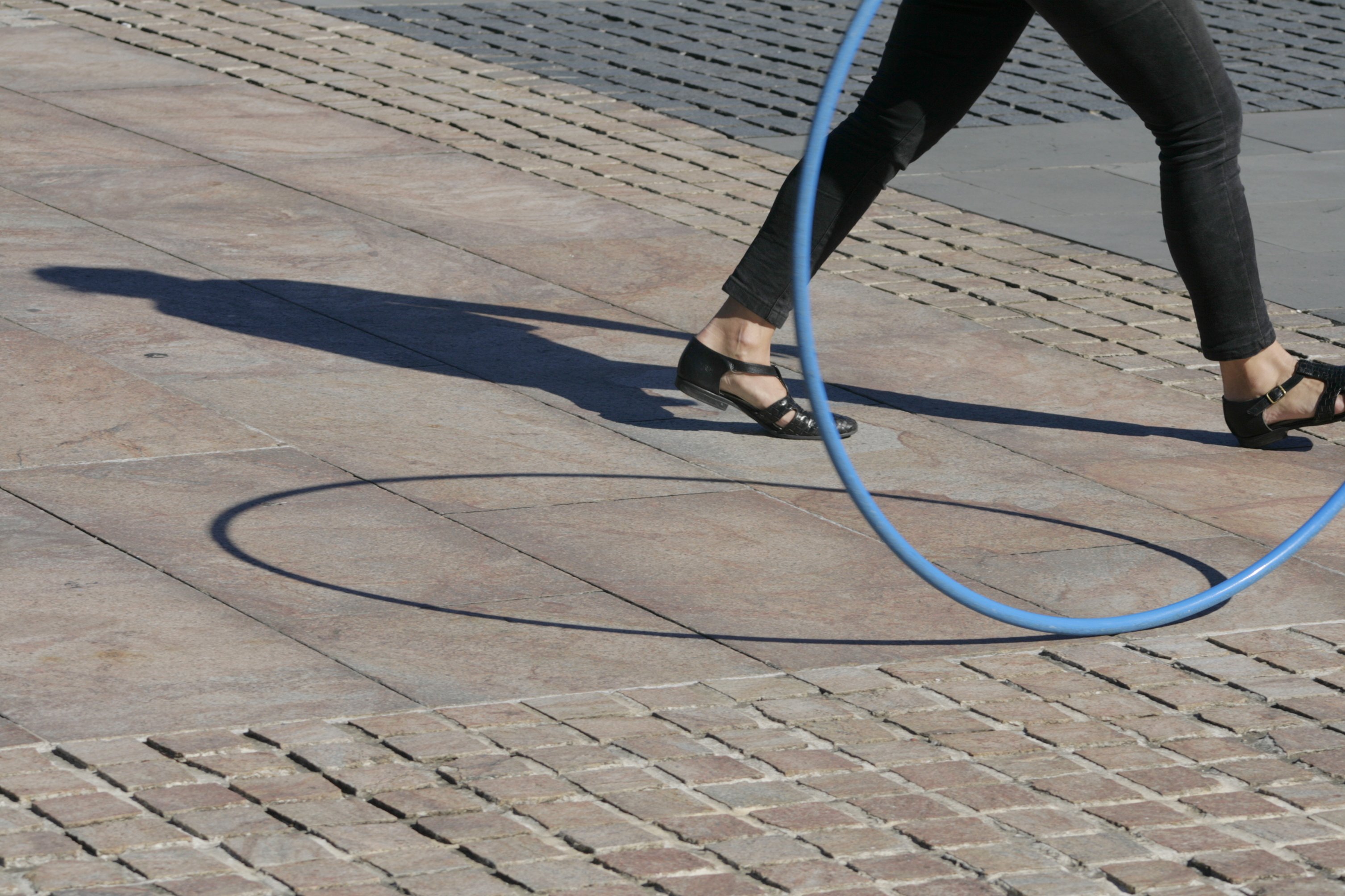
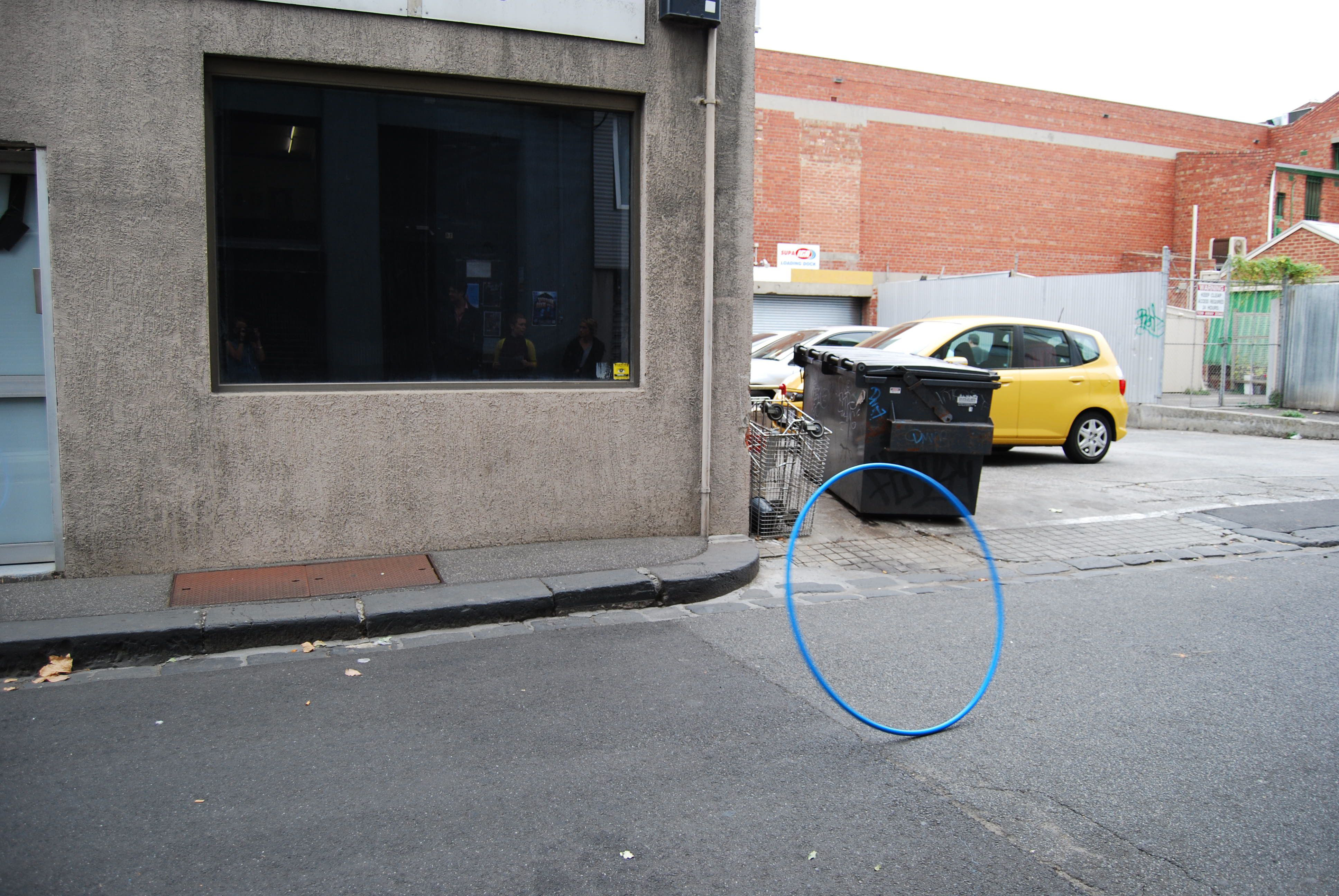
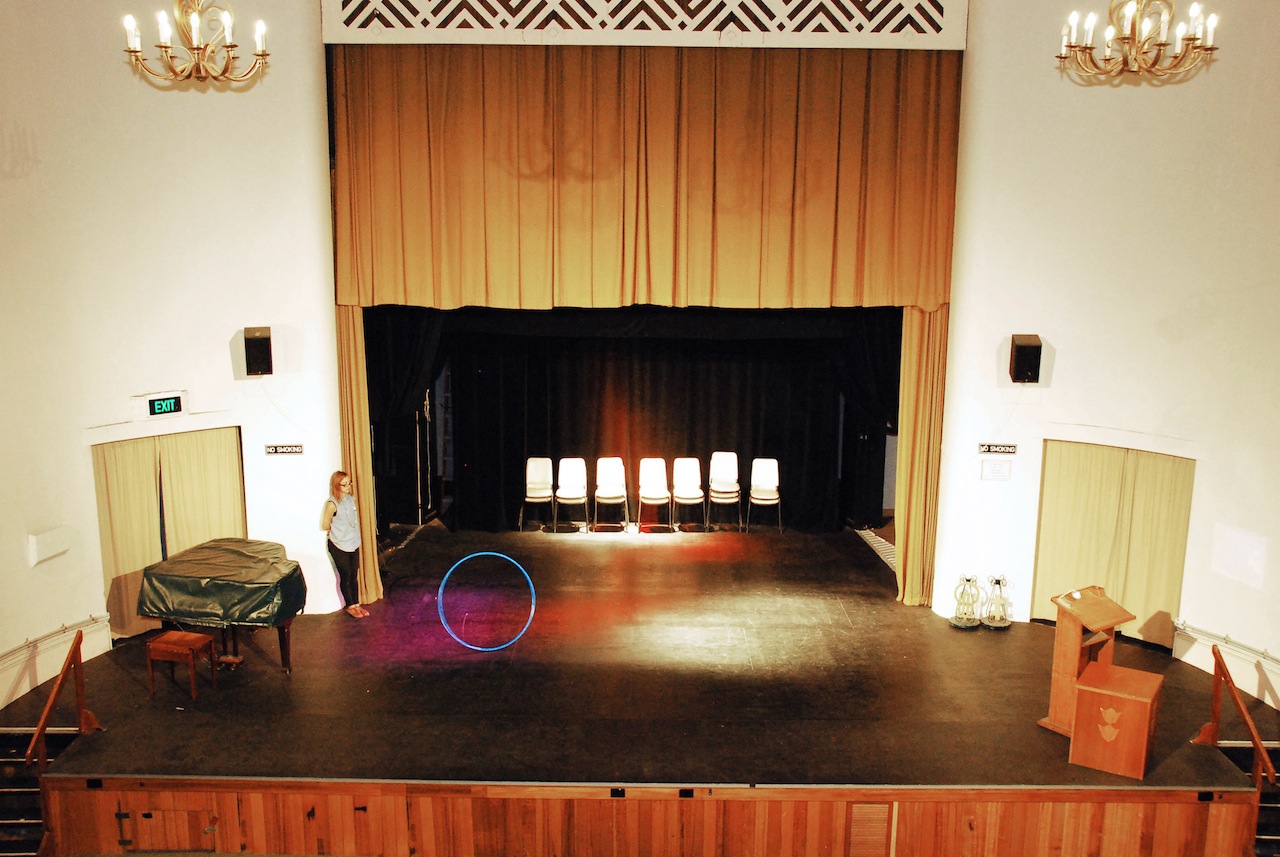
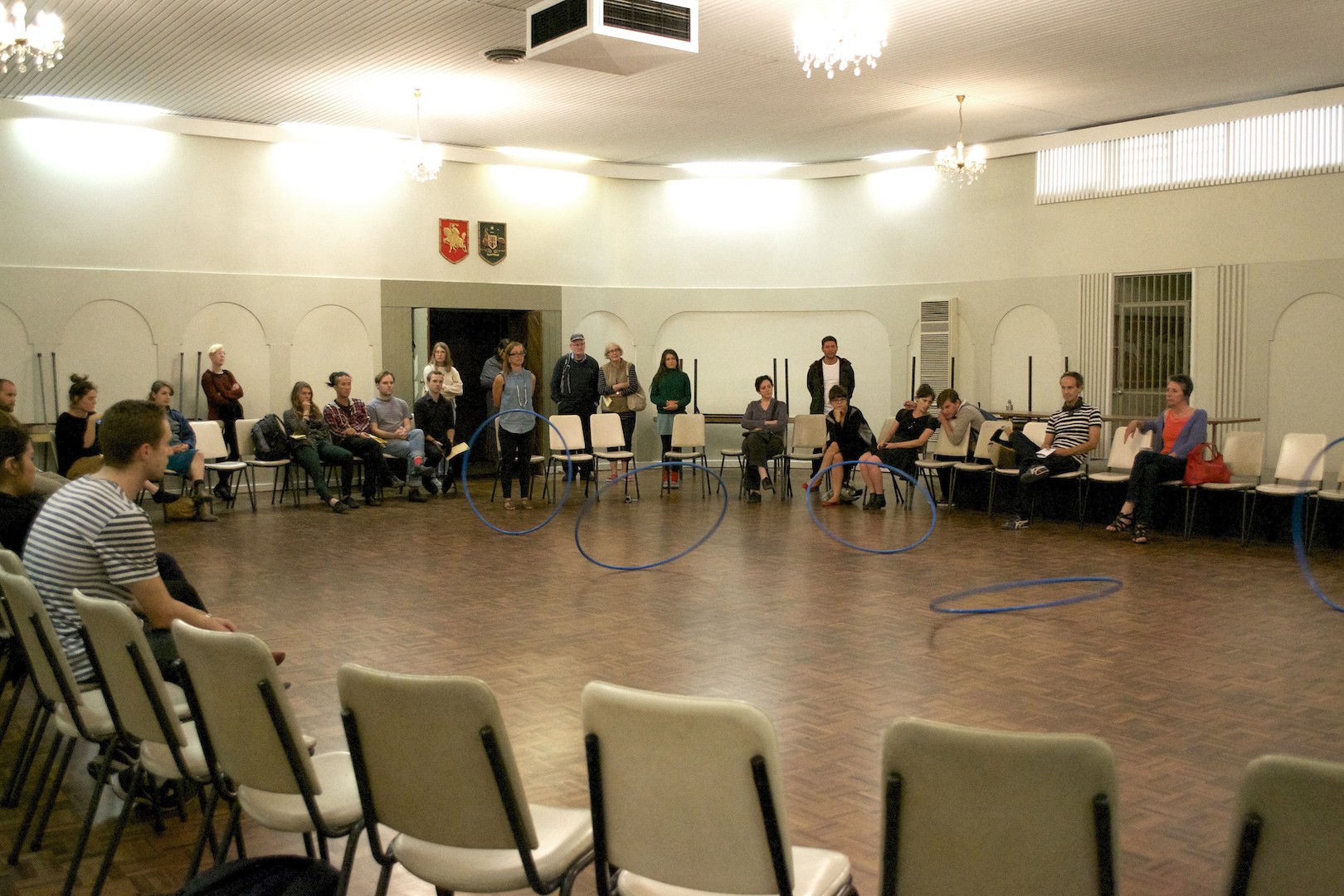

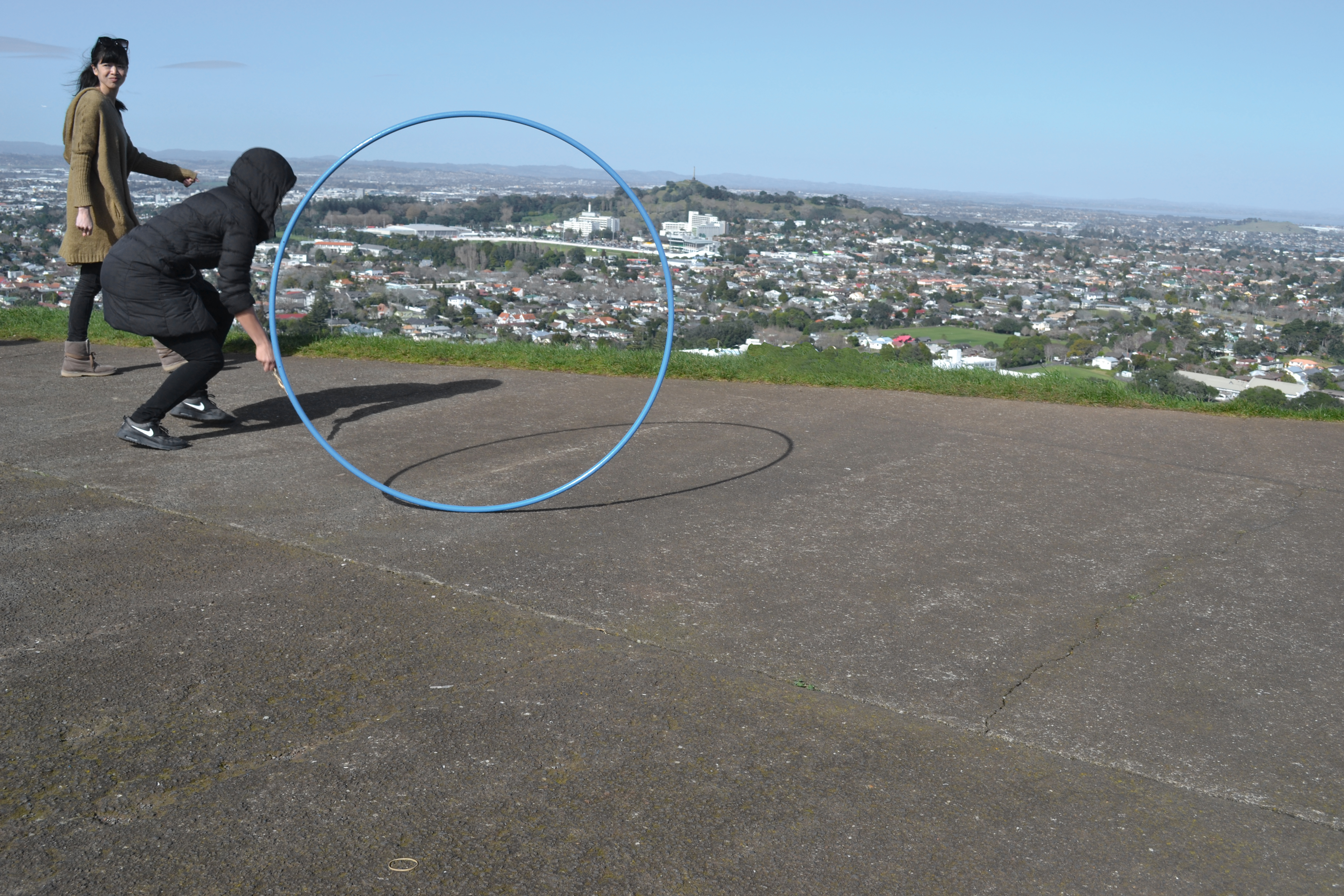
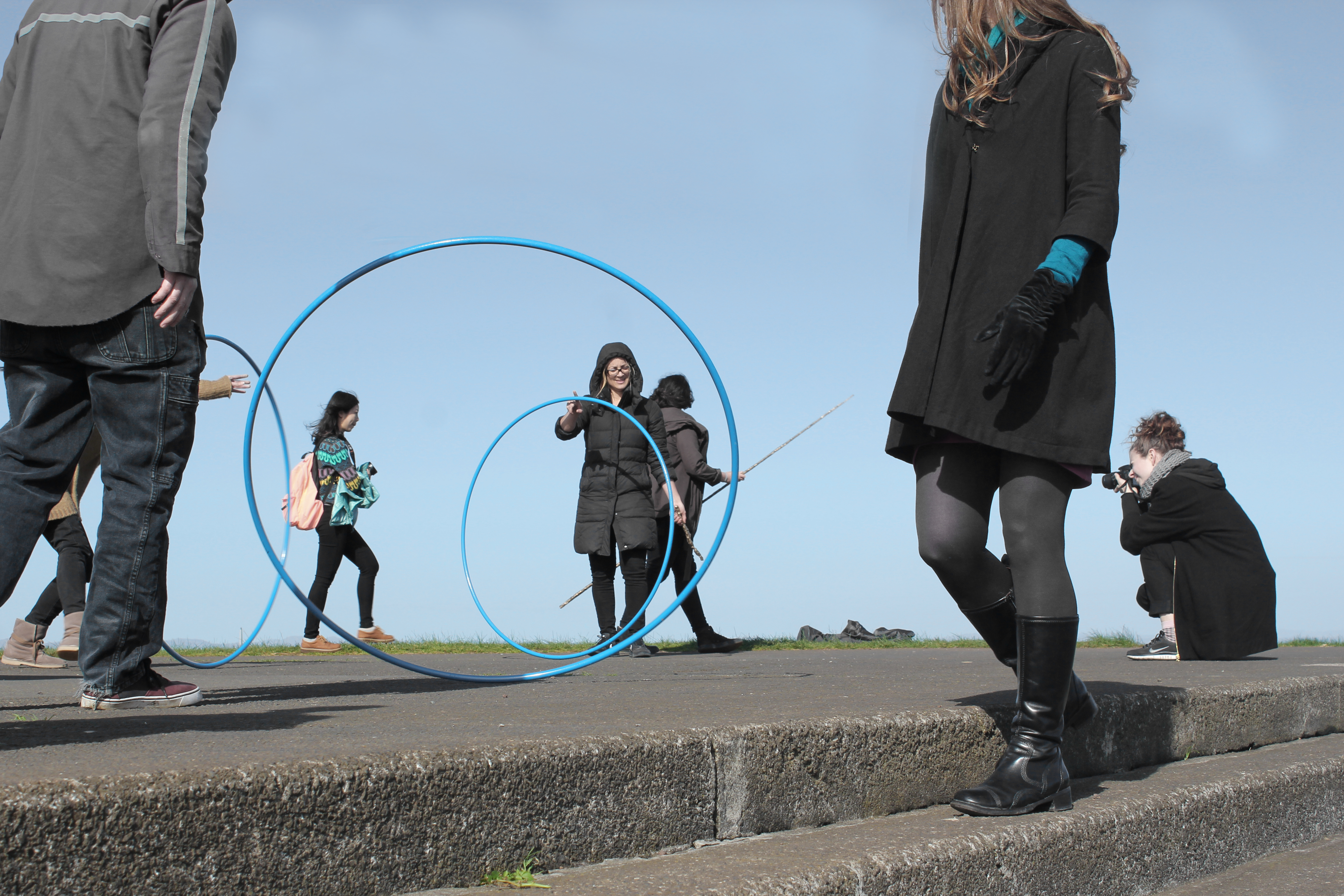
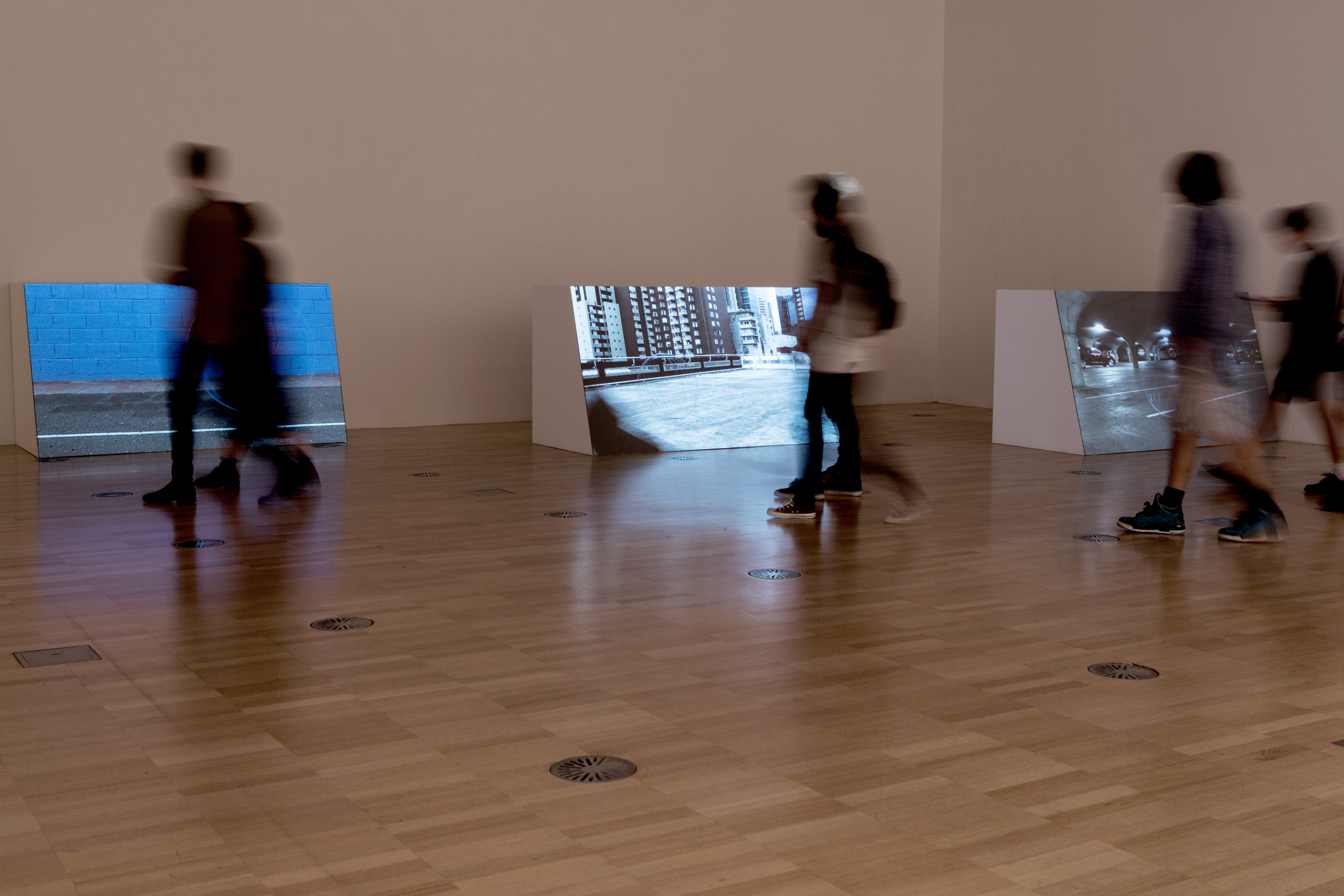
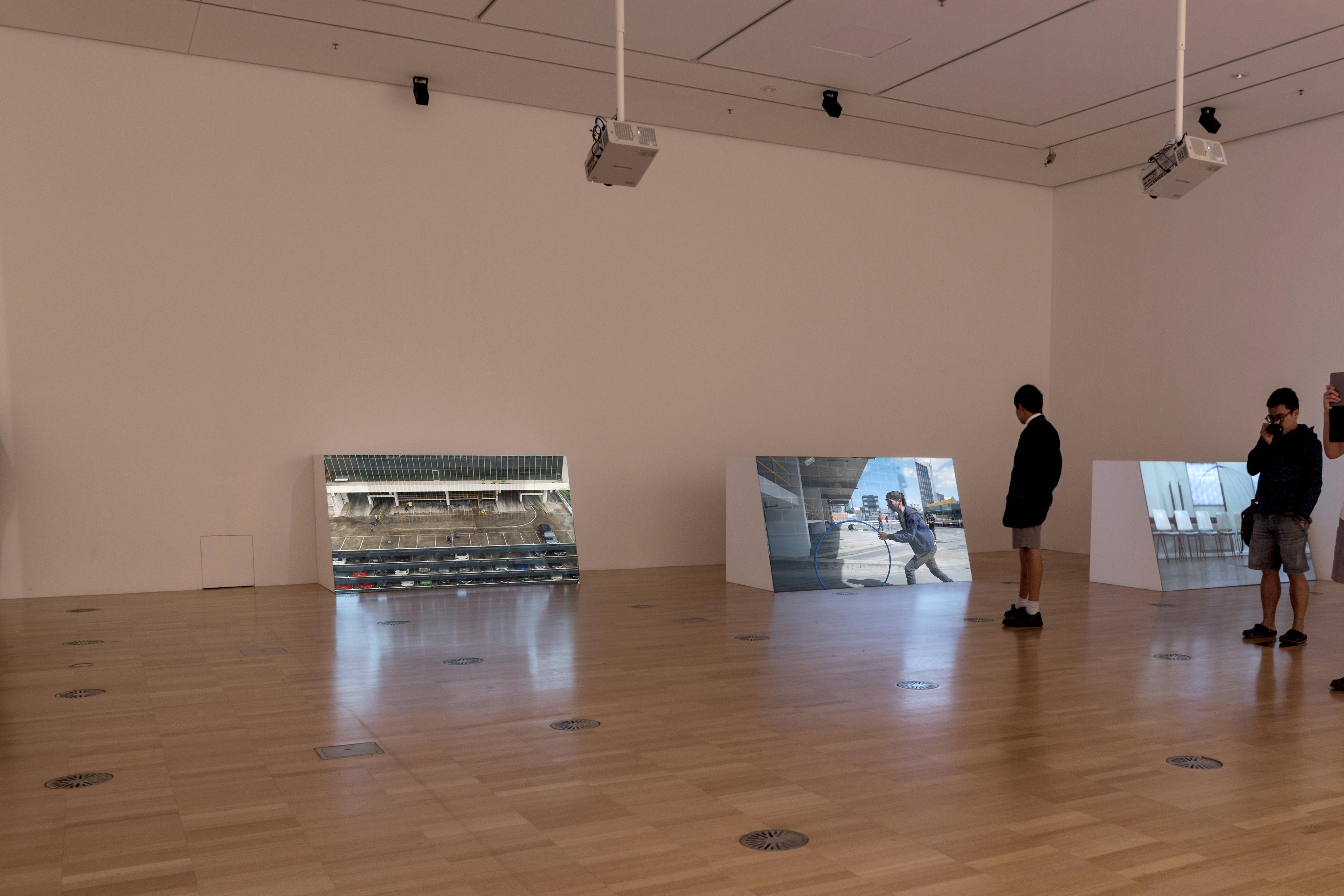
Essay on this project by Bree Richards, commissioned by MUMA.
Bianca Hester approaches art as an ongoing process. Responsive to the unforeseen and unknown, her fluid approach possesses the potential for redistributing what Jacques Rancière has described as ‘the landscape of the visible, a recomposition of the relationship between doing, making, being, seeing, and saying’.[1] Hester’s propositional interventions, sculptures and gestures – whether actualised or merely suggested – are always carefully planned, yet, much like experiments, outcome and effect are impossible to predict. By chance and design, her works are fields of encounter: between people, objects, materials and the spaces within which these are situated.
Frequently collaborative and always experimental, recent projects have seen the artist work directly with the city fabric through action-and-response performances that engage with the dynamics, unpredictable forces and relations of her chosen terrain. By observing the junctures between social conditions, sites and moments in time, Hester aims to heighten bodily and spatial awareness for performer and viewer alike. While her tactics are decidedly contemporary, she also draws on art-historical moments from the 1960s on, playing with the language of minimalism, performance, happenings, video actions, installation, sound art, and relational and situational practices.
All are present in Hoops: sound tests, performances, documents 2011–13, contained in a moment witnessed, captured and cast, in the heavy blue steel rings and the stitched-together video documents of actions that took place over three years. Creating a shifting field of sound, each performance is a simple sonic gesture, light and lyrical, and yet intimately concerned with the effects of gravity. Considered together, the works reflect Hester’s ongoing exploration of materiality, social and spatial relations and how these, in turn, shape and are shaped by public space. In Loop #2 and Loop #3, we see what happens when the HOOP PROPS are sent spinning in a range of Melbourne locations – singly or en masse – and the heavy steel rings meet the materiality of the ground. These sonic alterations to constructed space are variously heard and felt, each iteration generating a distinctive sound. Reverberating in dissonant cross-rhythms, the hoops temporarily disrupt the sites through chance operations, attuning, embodying and transforming space through their hypnotic rotations.
In relation to participants, viewers and locations, the soundtrack varies wildly, from clear, insistent ringing to a cacophonous choir, discordant and wailing. Elsewhere, only ‘cups’ of sound are audible, a muffled jangling overlaid with the casual conversation of passers-by, the whoosh of traffic and the city’s other aural elements. Just as the sound and motion of the whirling rings responds specifically to site and surface – asphalt, timber, cement – each act is further transformed through its documentation. The sense of repetition and difference is heightened by the way the footage is assembled, with actions described by an array of visual vocabularies: quick cuts interspersed with lingering takes; shaky close-ups followed by a steadier gaze; whether from the hip or from afar. Neither the viewing position nor the work’s meaning is ever fixed; instead, we observe, in real time or via the distancing screen, as these events crystallise then dissolve in perpetual movement.[2]
Tightly choreographed yet open-ended, Hester’s actions connect people in cooperative formations; her circular blue forms, welded and bent into shape, are like elements of a Beuysian social sculpture. Whether taking place outside or indoors, these moving props interact with their urban environments to create what the artist describes as a ‘community of actions’.[3]Hoops: sound tests, performances, documents emphasises collective rather than individual action, and by combining materials, spatial practice and experimental playfulness casts new light on the connection between art and everyday life. In the context of the gallery, the work is reimagined as traces that continue to resonate, as residues, objects and documents. The sculptures and videos are all that remain of the live moment, but they are far from inert: the hoops retain the potential to be repositioned and re-performed, just as the performances on screen can be re-enacted elsewhere. Recast as installation, the work is ongoing, existing at a juncture between its materials and its spatial and temporal registers.
Bree Richards is an independent writer and curator.
[1] Jacques Rancière, The Politics of Aesthetics, Continuum, London and New York, 2004, p.43.
[2] Bianca Hester, ‘Five Points of View’, Please leave these windows open overnight to enable the fans to draw in cool air during the early hours of the morning (exhibition catalogue), Australian Centre for Contemporary Art, Melbourne, 2010, p.76.
[3] Bianca Hester, quoted in Juliana Engberg, ‘Introduction’, Please Leave These Windows Open Overnight to Enable the Fans to Draw in Cool Air During the Early Hours of the Morning (exhibition catalogue), Australian Centre for Contemporary Art, Melbourne, 2010, p.7.
1 – 3. Performance at Saint Mary’s forecourt during Fashioning Discontinuities, 19th Biennale of Sydney, March 2014. Photos by Laure Stephens.
4 – 6. Hoops performance during Action/Response at the Lithuanian Club, North Melbourne, 2013. Curated by Hanna Matthews. Photos by Kay Abude.
7. Performance during A world, fully accessible by no living being, on a rooftop carpark on Russell Street, Melbourne, 2011. Photo: Kay Abude.
8 – 9. Performance during Movements materialising momentarily, on Maungawhau Mount Eden, Tamaki Makaurau Auckland, 2105. Photo: Mark Schneider.
10 – 11. Video installation titled Hoops: sound tests, performances, documents (2011 – 2013), during Melbourne Now, National Gallery of Victoria, 2013. Photo by Mimmo Cozzolino.